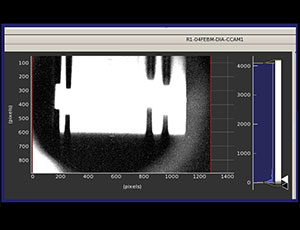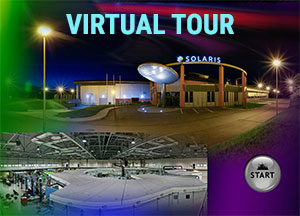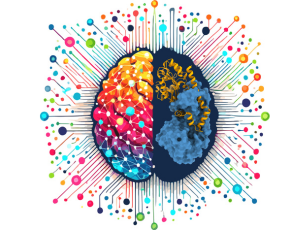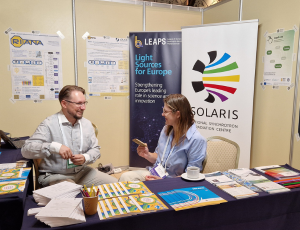 Web Content Display
Web Content Display
SOLARIS centre
 Web Content Display
Web Content Display
The first light in the SOLARIS synchrotron

The SOLARIS Centre team has managed to transmit a beam of electrons to the storage ring of the synchrotron and saw the first light at the entry points to the beamlines. The beam was maintained for more than ten minutes, and it went around the ring more than two billion times.
The energy of the beam reached 490 MeV, while the accumulated electrical energy was 5.2 mA. The next task and challenge for the SOLARIS team will be to achieve the full energetic potential of the beam, i.e. 1.5 GeV, which is three times more than currently.
Before we were able to achieve this, we had to run the beam through the linear accelerator, which was relatively simple, since the linear accelerator, as the name suggests, runs in a straight line. A more complicated challenge was to have electron beams pass through the twelve electromagnets in the storage ring. We had to adjust the settings of various parameters of the synchrotron many times, in particular the values of the magnetic fields of the magnets, to match the current energy of the beam, so that it could smoothly circulate around the 96 metres long ring – explained Adriana Wawrzyniak, main accelerator physicist at SOLARIS. – The next step was to synchronise the pulse magnet with the injection momentum of the beam so that it would effectively propel the electrons into the proper orbit, and to match the parameters of the RF cavities to enable the electrons to accumulate in the synchrotron ring – added.
Before the beam begins to emit light of stable parameters, so it can be used for research on experimental lines, many more hours of work and tests are ahead of the SOLARIS scientists. It is important for SOLARIS team that the light of the first Polish synchrotron is of the best quality and has the best parameters.



